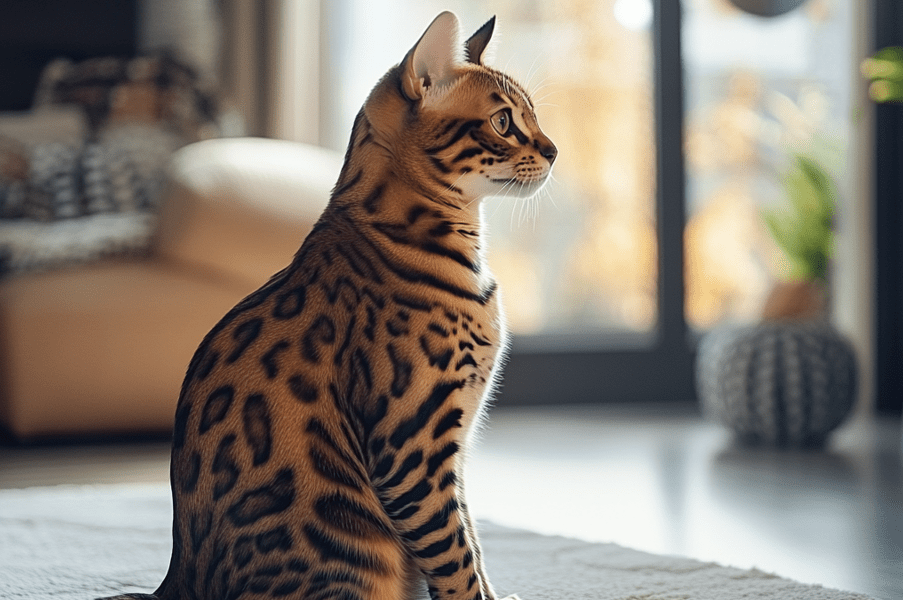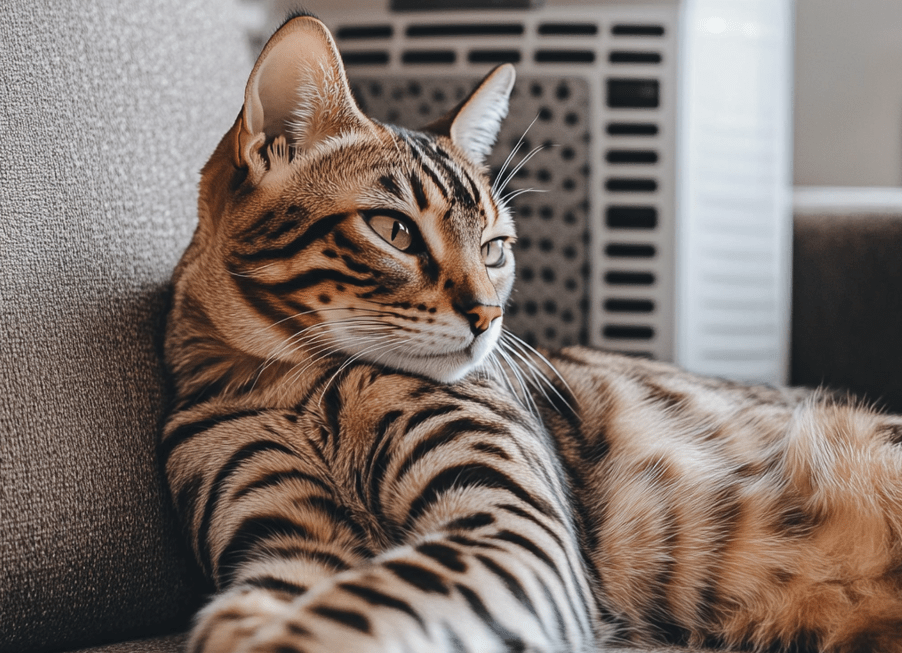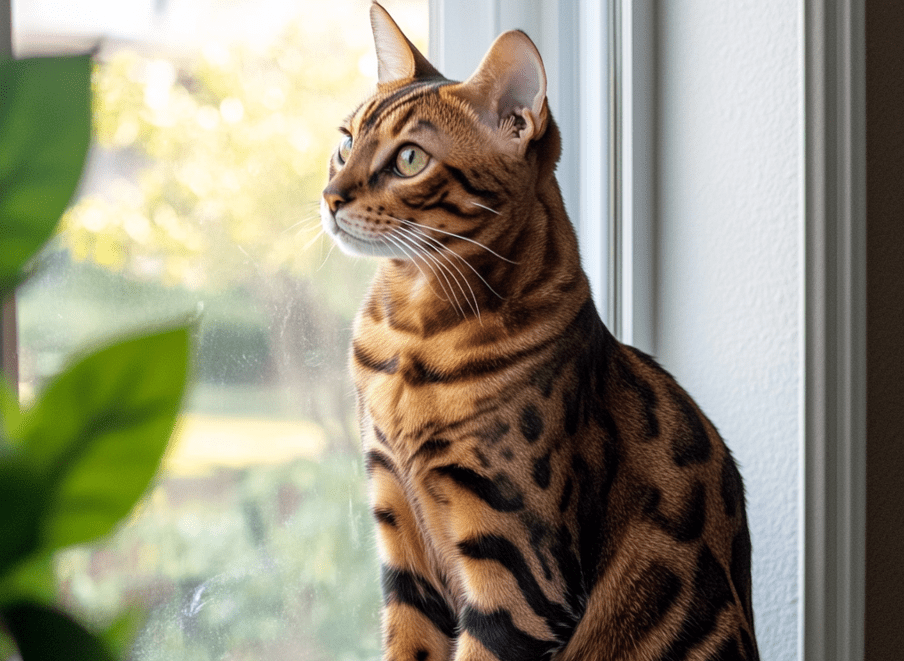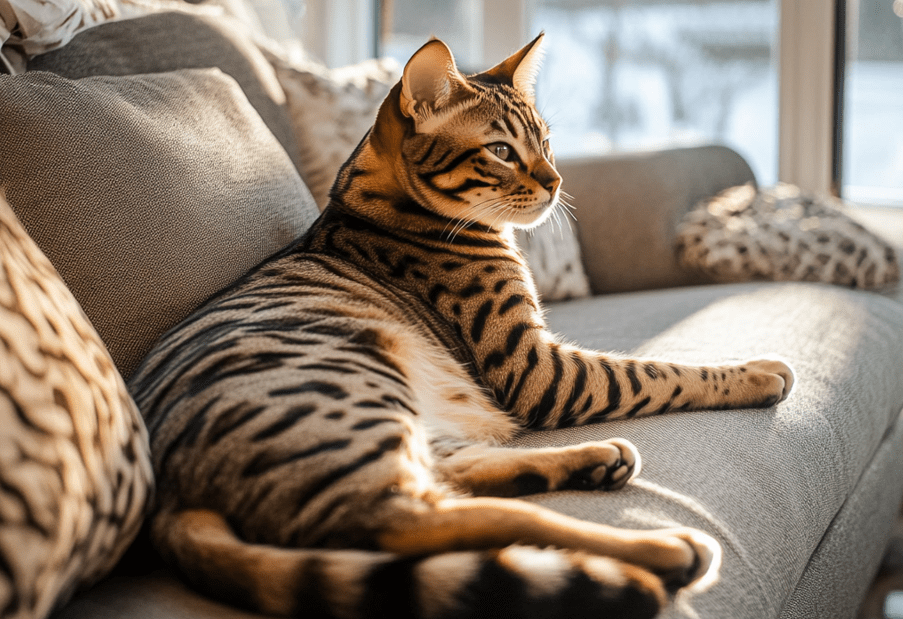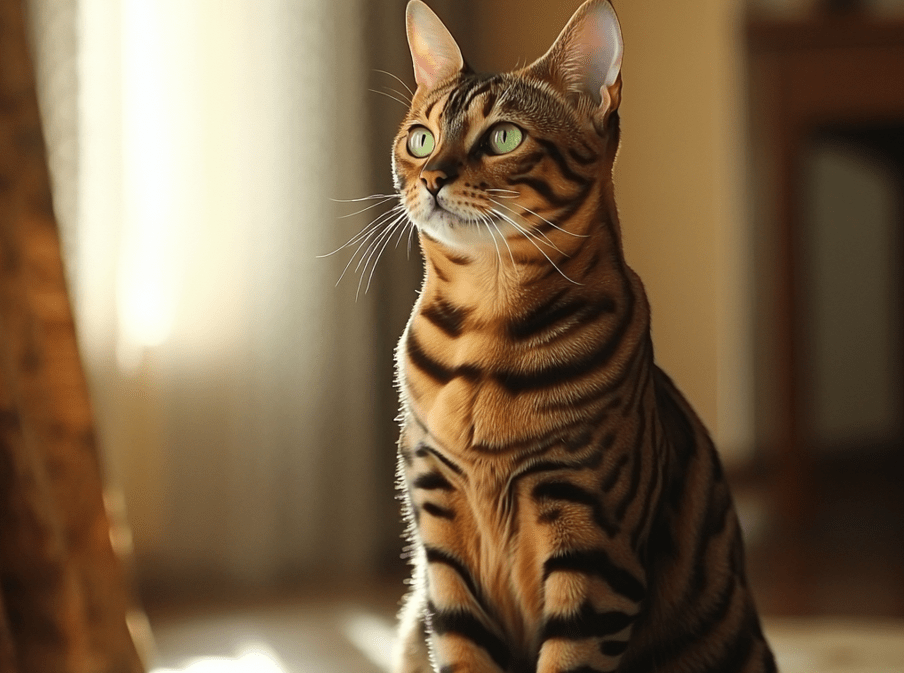
Bengal Cat originated from the breeding of two different species – one is the Asian Leopard Cat and the other is the common domestic cat.
This special breed of cat is now becoming very popular due to their unique appearance and temperament. Currently, most Bengal Cats are many generations away from their wild ancestors, so they don’t need special care – they are now just like regular domestic cats. Learning how to Care for a Bengal Cat is crucial before welcoming them into your home. In this article we will cover everything you need to know about their caring.
1.Overview and characteristics of Bengal cats
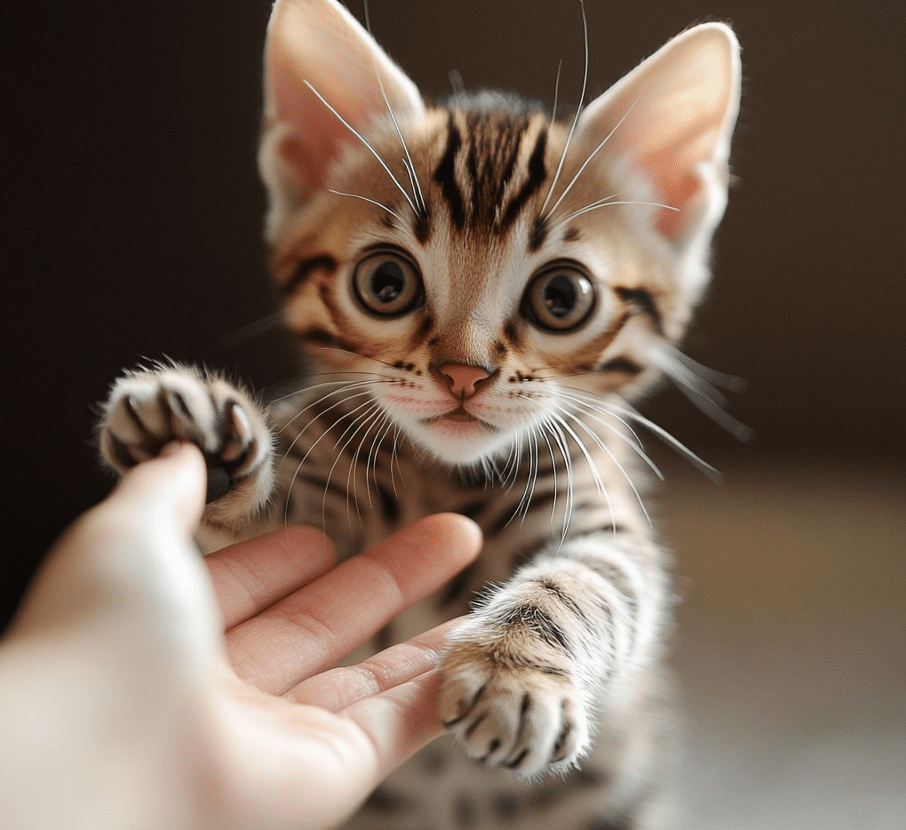
Characteristics of Bengal Kittens:
Bengal kittens are among the most friendly, social, playful, and affectionate breeds. Their intelligence and attractive appearance make them ideal companions for any cat owner.
Main characteristics:
Exceptional intelligence and instincts that make training easier
Excellent health, resulting in lower medical costs
Low maintenance requirements
Attraction to water and no aversion to bathing
Special care:
While there are some perceptions about Bengal cats‘ temperament, with proper care and training, they develop into ideal pets. However, they may become aggressive if left alone for long periods. They need regular play and exercise.
Family relationships:
Bengal cats tend to become more attached to one person. To avoid this, it’s important to ensure that everyone in the family participates equally in their care – including play, feeding, and maintenance.
2.Exercise and Activity Needs
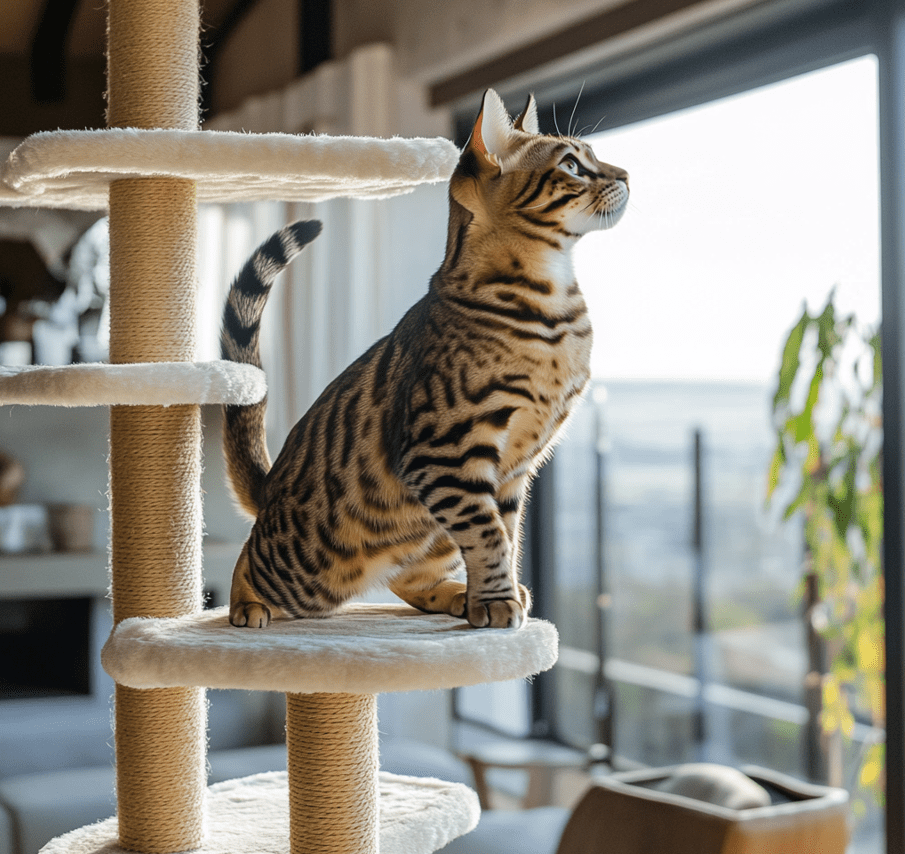
Bengal cats are active and love to jump, so you should provide a cat tree and perches for your cat to observe the room. A floor-to-ceiling cat gym is ideal, with plenty of platforms and nesting boxes. In fact, it’s even better if you have one in each room. Place a cat gym near windows so your Bengal can watch birds simultaneously, which they will greatly enjoy.
Bengals need plenty of exercise, but it’s not safe to let them roam freely outside. Fortunately, they walk well with a leash and harness. Just like you would with a dog, walk your Bengal cat for 10-20 minutes in the morning and evening.
Consider the Bengal cat’s high activity level and intelligence, and purchase interactive toys like laser lights. Even after walking your cat, you need to play with them for at least half an hour in the morning and evening. Playtime with kittens is always important! Cats love movement. Put a feather on a string and move it slowly on the ground. This will make your Bengal think it’s alive. Move it slowly, wiggle it back a bit, until your Bengal starts jumping around.
Young kittens are more enthusiastic and need constant interaction. As they grow older, their need for such activities will decrease, but this doesn’t mean you can neglect them. Dedicate at least half an hour a day to your Bengal. When they release their energy during play, they will remain calm and friendly.
Give your Bengal opportunities to climb. Bengal cats love climbing, and the higher they can go, the happier they’ll be. If you don’t provide appropriate climbing structures, they’ll find their own things to climb, like your curtains.
3.Water Play and Bathing
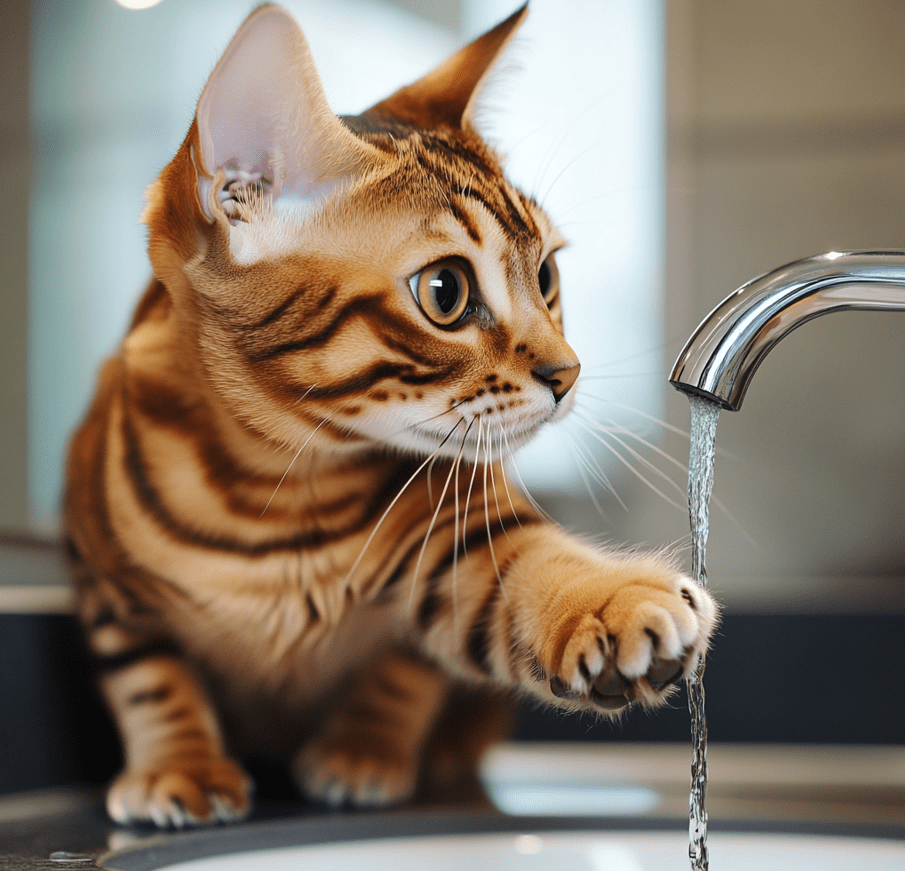
Before bathing your cat:
1.Brush their coat and check their skin for abnormalities
2.If you notice any blisters, abrasions, or scratches, contact your veterinarian and take your Bengal for a checkup
3.Gently submerge in water and apply veterinarian-formulated cat shampoo
4.Massage it in and rinse thoroughly
5.Use a soft cloth to dry your kitten, not a towel specifically, by patting
6.Avoid getting their eyes and ears wet – this can be unpleasant and irritating for your Bengal
Bengal cats often enjoy water, a trait that most domestic cats don’t have. Besides being easy to brush, Bengals enjoy bathing, which is rare among domestic cats!
You may need to be careful that your aquarium doesn’t turn into a fishing pond. If your yard is secure enough to prevent escape, you can also provide a small backyard pool for water play. Engage with the cat using water – Bengals enjoy going in sinks, showers, and tubs.
4.Grooming and Maintenance
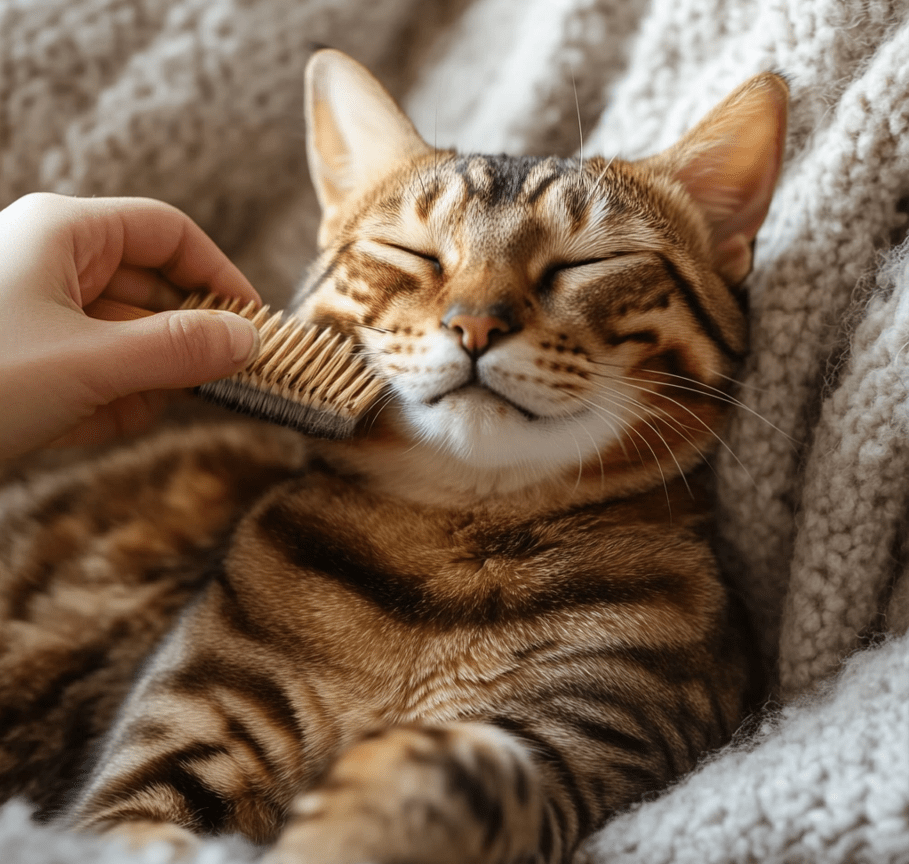
You can brush your cat once a week to remove dead fur and prevent matting. Bengal cats shed less compared to other breeds, which is why many consider them hypoallergenic. The unfortunate truth is that there are no hypoallergenic cats, but Bengal cats are a great choice for those who don’t have severe reactions to cats.
Bengal cats have a satin finish coat that doesn’t require much maintenance. While most cats need brushing at least three times a week, Bengal cats will do well with once-weekly brushing. You may need to do this more frequently during shedding seasons or if you have allergies. Use a soft bristle brush or rubber grooming gloves for best results and to avoid skin irritation, remove loose hair from the coat, and keep it extra shiny and smooth.
Since you can’t wash these areas, you’ll need to clean your Bengal’s eyes and ears separately. Instead of water, there’s a special, veterinarian-approved cleaner that won’t irritate your cat’s sensitive skin. Apply it on a cotton ball, remove any discharge from their ears, and gently wipe around their eyes. Weekly, check their ears as they can accumulate ear wax.
Some Bengals secrete a type of oil under their chin, which should be cleaned with cotton soaked in the same liquid used for ears. Some males secrete oil at the base of their tail, which needs cleaning with a special cat shampoo.
Trim your Bengal’s nails every two to three weeks using sharp clippers made for cats. Start nail trimming when they’re kittens – they’ll get used to it and are less likely to get angry during grooming. Make sure your cat’s litter box is cleaned daily.
5.Diet and Nutrition
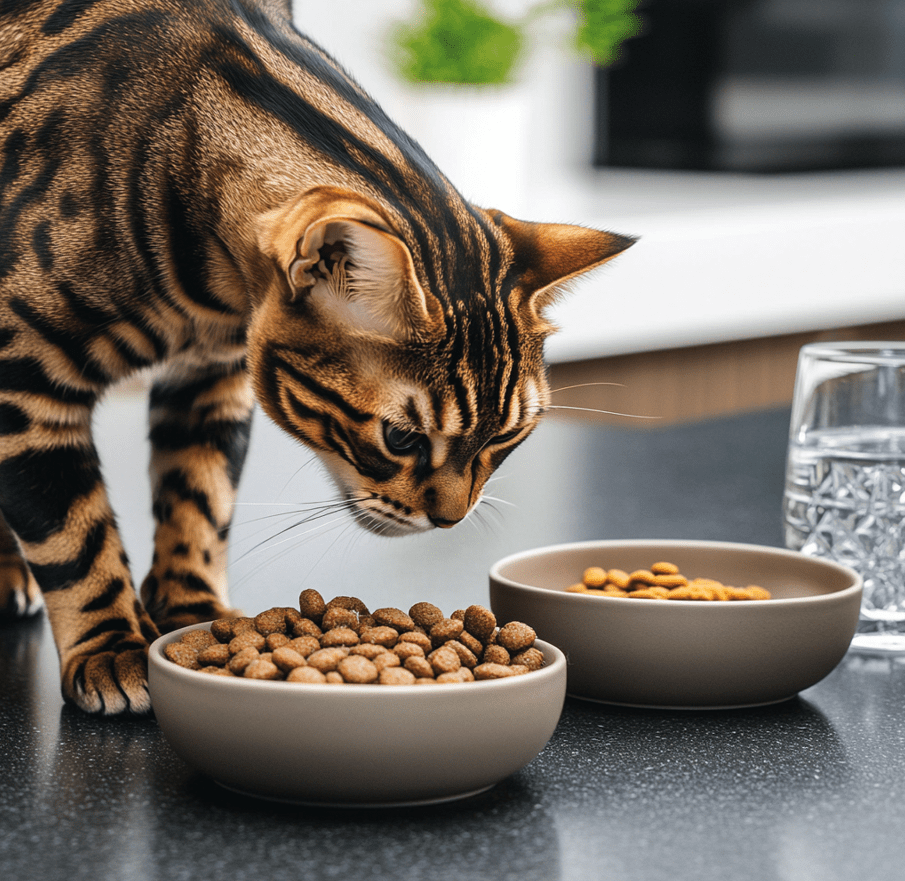
A Bengal cat should be given appropriate balanced nutrition for each life stage: The proper diet for Bengal cats is essential to ensure they get all the nutrients they need at every stage of their life.
For Kittens:
Dry and wet food specially formulated for kittens is essential for proper growth. If you’re unsure about what food should I get for a Bengal kitten, opt for kitten-formulated food that supports their growth and development, including high-quality protein sources like chicken and fish.. You may be wondering, what do Bengal cats eat? The answer is that they thrive on a high-protein diet, which can include wet food, dry food, and fresh meat such as chicken, turkey, or rabbit.
For Adults:
Quality maintenance dry food
Wet food (canned or pouched)
Can add fresh lean meat: white fish, boiled chicken, raw rabbit
Special low-fat food for neutered/spayed cats
For Pregnant Cats:
Kitten food is recommended during pregnancy. A proper Bengal cat diet ensures that both the mother and kittens are well-nourished during pregnancy, providing all the nutrients necessary for healthy development.
Feeding Guidelines:
Understanding your Bengal cat’s dietary needs is crucial to providing a long and healthy life for your pet. This includes adjusting their diet according to their age, weight, and activity level.
- Use package feeding guidelines as initial reference
- Monitor weight weekly – ribs should be easily felt
- If ribs are difficult to feel, reduce food amount by 10%
- Recheck weight after one week of reduced feeding
- Always ensure freshwater is available
- Provide variety with fresh foods
- Consult vet immediately if diarrhea occurs
Feeding only regular dry cat food is not sufficient to meet a Bengal’s nutritional needs. A Bengal cat raw food diet is one option for providing your Bengal with more natural proteins and nutrients, but it’s important to ensure the diet is nutritionally balanced to support their long-term health.
6.Veterinary Care and Health
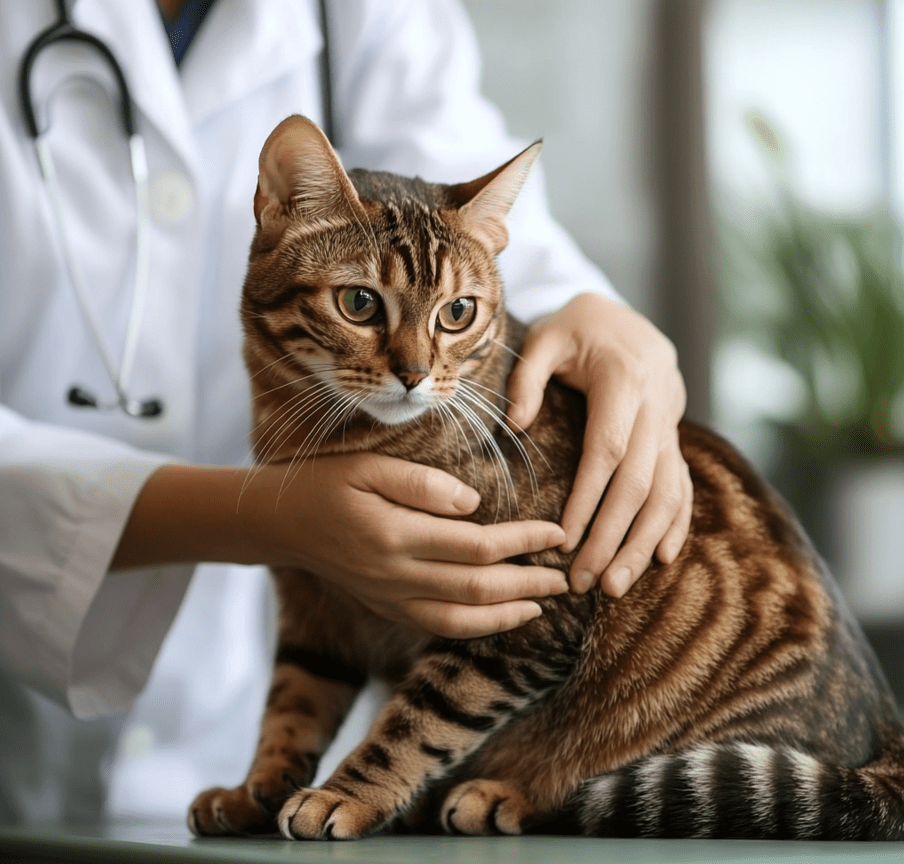
Take your Bengal cat to the vet regularly for a long and healthy life. In the first year, monitoring their development is crucial, and you shouldn’t miss regular appointments.
Vaccination Schedule:
1.8-9 weeks: First trivalent vaccine
2.21-30 days after first vaccine: Second trivalent dose
3.One year after second vaccine: Trivalent booster
4.Rabies vaccine and FVRCP combination vaccine recommended
Note: Although some Bengal breeders oppose leukemia vaccine due to Asian leopard cat ancestry, no evidence of special sensitivity to this vaccine has been found
Deworming Schedule:
1.Oral products like Panacur at 4, 6, 8, 10, and 12 weeks of age
2.Monthly treatment from 6 weeks with products like Stronghold (UK) or Revolution (US)
Additional Health Measures:
1.Daily tooth brushing with vet-approved products to prevent dental disease
2.Regular dental care prevents gingivitis, periodontitis, and tooth resorption
3.Microchipping for proof of ownership and recovery if lost or stolen
Important Notes:
1.Ensure your chosen vet has experience with Bengal cats
2.Establish a proper healthcare schedule with your vet at adoption
3.Neutering is recommended
4.Dental health is important as problems can lead to heart, liver, and kidney issues
7.Housing and Living Environment
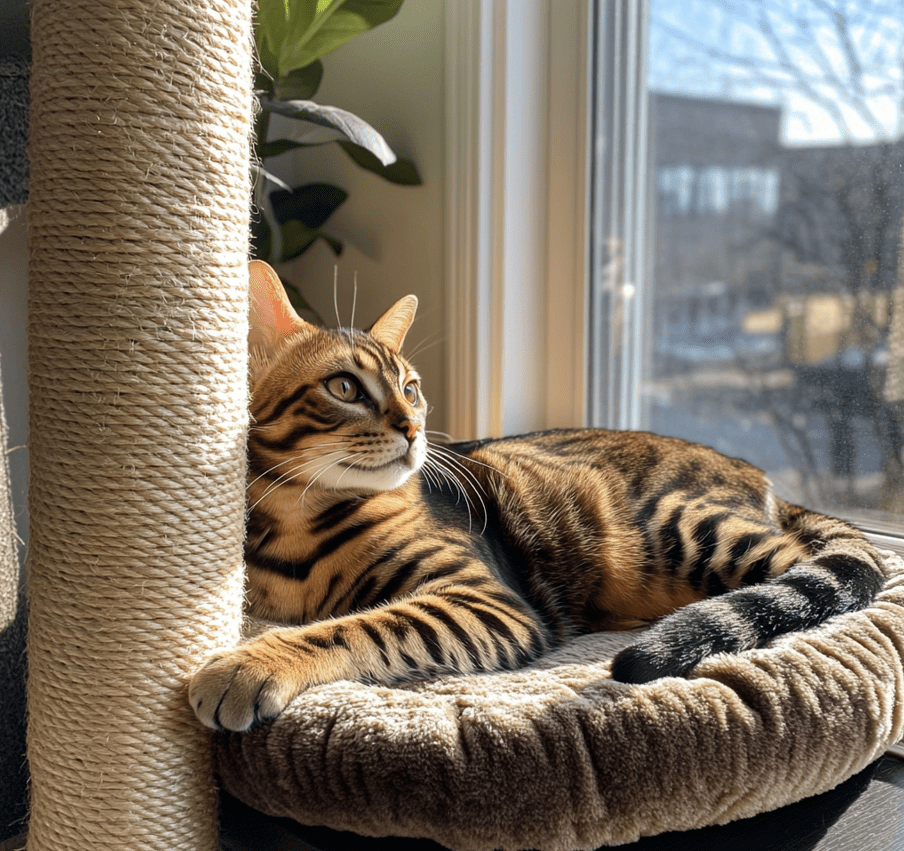
Like any cat, a Bengal cat is best kept indoors. This protects them from:
1.Catching diseases from other animals
2.Getting into fights
3.Being attacked by predators
4.Getting injured by vehicles
Litter Box Requirements:
1.Should have a cover for privacy
2.Needs high sides because Bengals can jump three times their height
3.High sides prevent them from urinating outside the box
4.If interested, Bengals can be toilet-trained more easily than other cats, especially when started young
Enrichment and Companionship:
1.Provide scratching posts to protect furniture and maintain claw health
2.Consider getting another cat as a companion (doesn’t have to be another Bengal)
3.A feline friend can help with nighttime play fights and keep your Bengal from disturbing you at night
Bengals love attention and sleeping with their “parents” Make the most of your time together, as Bengals typically live 12-18 years. Let them cuddle at night and provide plenty of playtime and attention – the more, the better!

